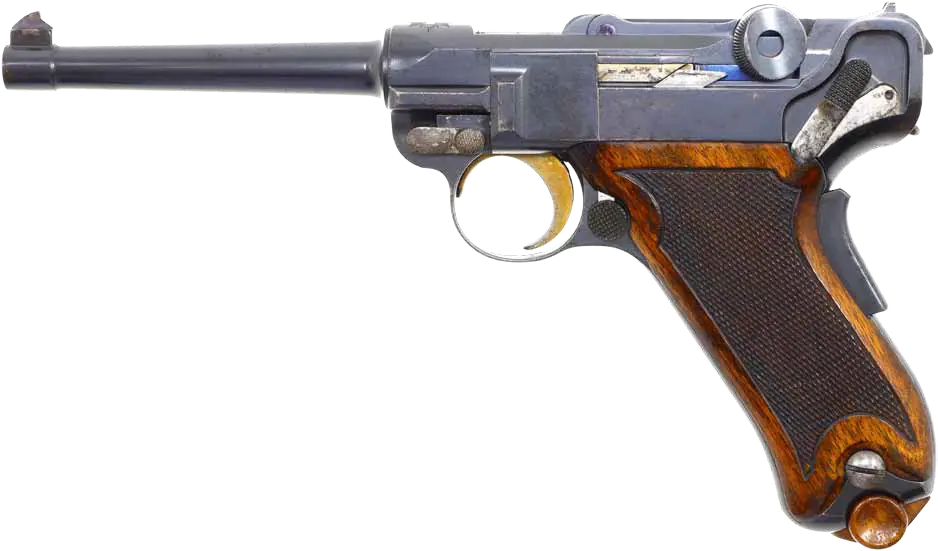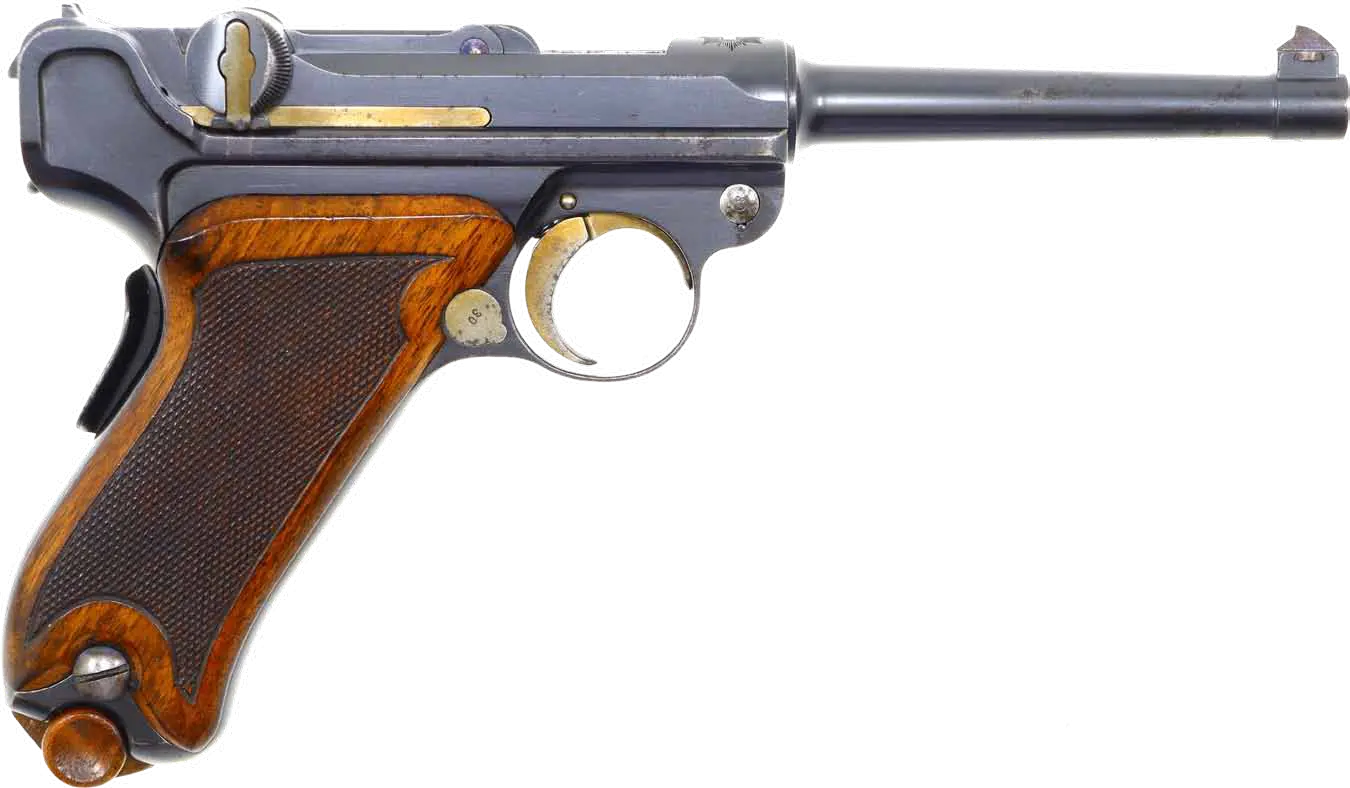Luger – the most successful pre-1900 semi-automatic design
Luger Model 1898, Model 1899/1900

Luger 1898 outfit

Luger Patent drawing
After Hugo Borchardt’s ego-bruising rejections, Georg Luger took the Model 1893 Borchardt design and refined it to a much more compact and familiar form. The first tool room samples were made by DWM in Germany in 1898, with limited pre-production ensuing in 1899/1900 for testing by the Swiss military, which was the first country to adopt the Luger as a sidearm on May 4, 1900. There were 40 pistols in this group, with the first 35 having a hand-cut “cross-in-sunburst” on the chamber. Still chambered in the 7.65 mm Borchardt cartridge, and was known at the time as the Borchardt-Luger. Other unique features included a long bolt with a doubled firing pin spring, a middle toggle link with a squared extension, a broad safety lever whose position was marked with a scribed, white-polished border, and an unrelieved frame to accept a flat-button magazine. Although several of these features were refined before the first production run, the design was essentially unchanged until 1906, afterwards remaining remarkably stable to render the Luger as one of the most popular and well-recognized pistols in the world.
The Luger presented in the display, serial number 30, is one of the first 40 made for the Swiss trials and was also presented to the British for their trials as well. This well-traveled gun, is also accompanied by its issued holster.
Video regarding development of Luger and its ties to the Borchardt C93
Videos using computer animation depicting operation of a Luger
Videos using computer animation depicting operation of a Luger








